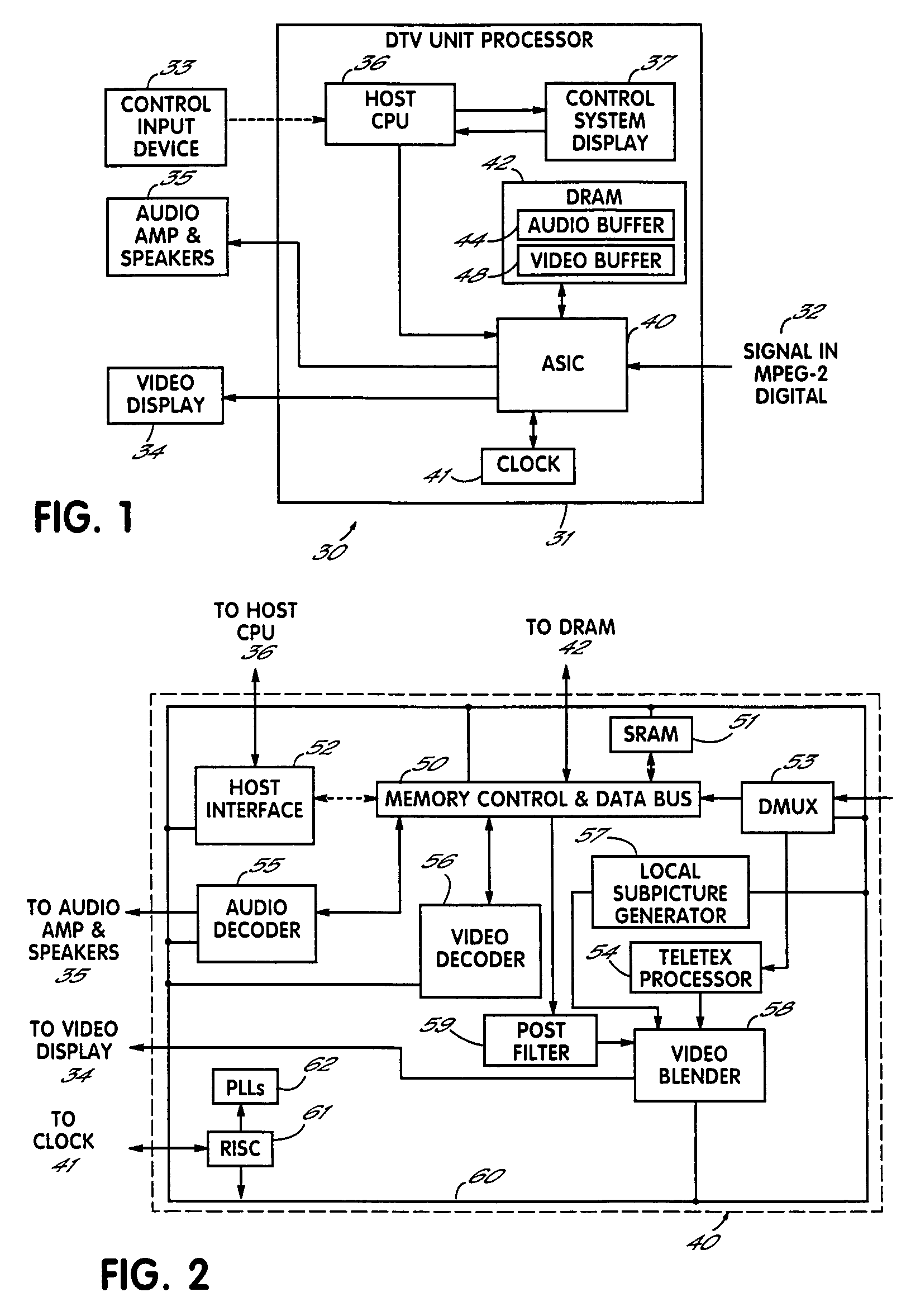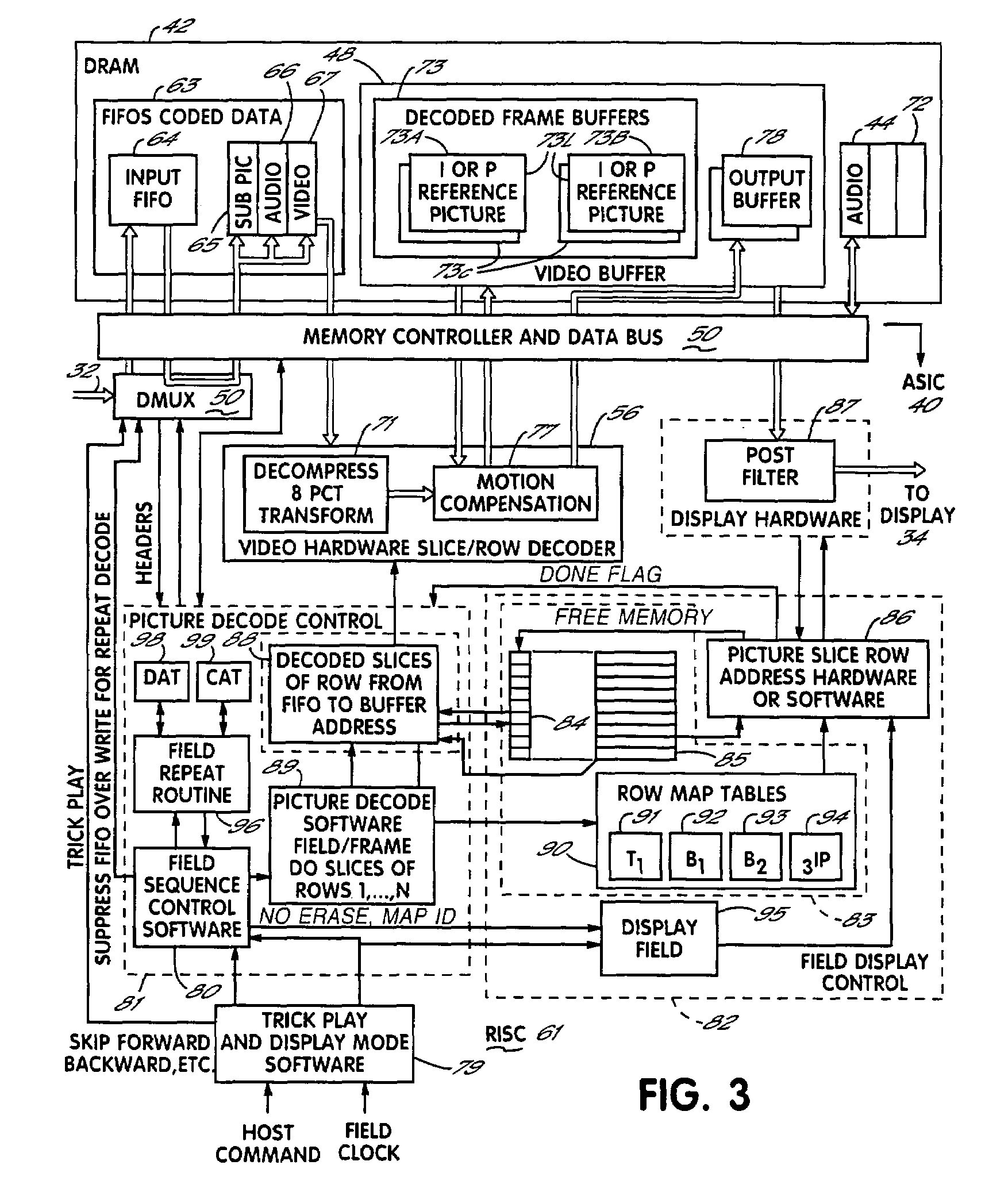Digital video decoding, buffering and frame-rate converting method and apparatus
- Summary
- Abstract
- Description
- Claims
- Application Information
AI Technical Summary
Benefits of technology
Problems solved by technology
Method used
Image
Examples
example 1
[0089]The case where no frame rate conversion is required and a 3-frame video buffer is available includes the situation where pictures in the program have a display rate that is the same as that of the display 34, as, for example, a program of 30 frames per second being presented by a system having an NTSC display format. The output sequence of the fields of the successive frames of the picture, which are identified by the superscripts 1, 2, . . . etc., is either:
T1B1,T2B2,T3B3, . . . , etc.
or
B1T1,B2T2,B3T3, . . . ,etc.,
depending on which field of a frame is to displayed first. The solution is straightforward.
example 2
[0090]The case where 3:2 conversion is required with a 3-frame video buffer available includes the situation where, for example, a motion picture is encoded in progressive frames at 24 frames per second to be presented by a system having an NTSC display format of 30 frames (60 fields) per second. This requires a 4:5 frame rate conversion. In this case, every four frames of a program bitstream in the form of:
T1B1,T2B2,T3B3,T4B4
must be output as five frames. MPEG specifies that such conversion involve outputting the first field of the first frame twice as the first and third fields and outputting the second field of the third frame as the sixth and eighth fields of a ten field sequence. Fields of any given frame are output in the order TB, BT, TBT or BTB. For 4:5 frame rate conversion, the output sequence of the fields of the successive frames 1, 2, . . . etc. of the picture is:
T1B1,T1B2,T2B3,T3B3,T4B4
A similar result can be achieved with the sequence:
B1T1,B1T2,B2T3,B3T3,B4T4
[0091]...
example 3
[0104]The case where 3:2 pull-down conversion is required with a 3-frame video buffer available in the case of, for example, a motion picture is encoded in progressive frames at 20 frames per second to be presented by a system having an NTSC display format of 30 frames (60 fields) per second. This requires a 2:3 frame rate conversion. In this case, every two frames of a program bitstream in the form of:
T1B1,T2B2
must be output as three frames. Such conversion may involve outputting the first field of the first frame twice as the first and third fields and outputting the second field of the second frame twice as the fourth and sixth fields of a six field sequence. The output sequence of the fields of the successive frames 1, 2, . . . etc. of the picture is:
T1B1,T1B2,T2B2
A similar result can be achieved with the sequence:
B1T1,B1T2,B2T2
[0105]To output the sequence T1B1,T1B2,T2B2, the display sequence control 80 controls the decoding and output as follows:
[0106]Start with decoding of ...
PUM
 Login to View More
Login to View More Abstract
Description
Claims
Application Information
 Login to View More
Login to View More - R&D
- Intellectual Property
- Life Sciences
- Materials
- Tech Scout
- Unparalleled Data Quality
- Higher Quality Content
- 60% Fewer Hallucinations
Browse by: Latest US Patents, China's latest patents, Technical Efficacy Thesaurus, Application Domain, Technology Topic, Popular Technical Reports.
© 2025 PatSnap. All rights reserved.Legal|Privacy policy|Modern Slavery Act Transparency Statement|Sitemap|About US| Contact US: help@patsnap.com



